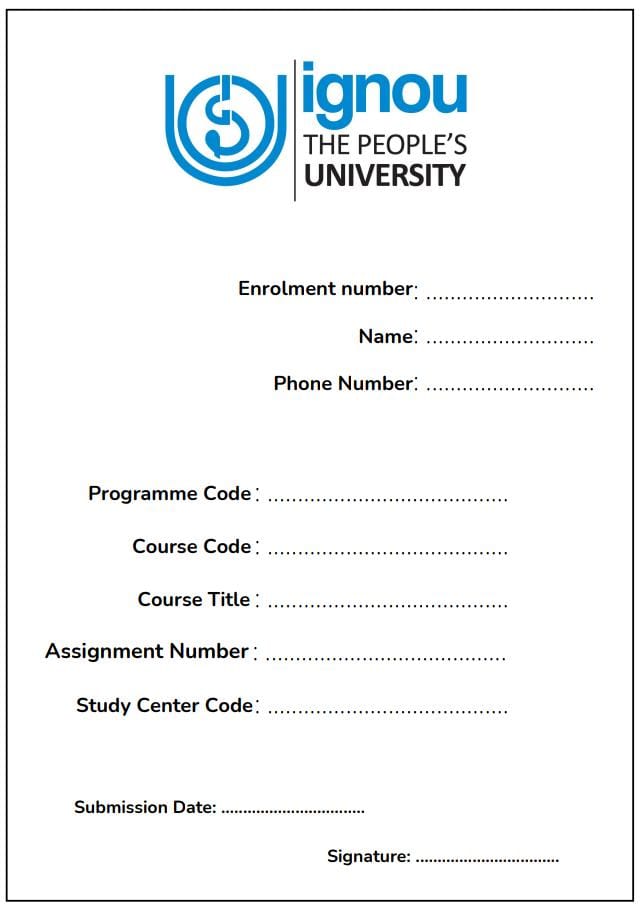The Anthony and Simon framework for understanding the Management Information Systems (MIS) and decision-making process is a conceptual combination of two foundational models developed by Robert N. Anthony and Herbert A. Simon, which help explain how organizations structure decision-making processes at different levels of management and how MIS supports those processes. Together, these frameworks offer a structured approach to understanding the types of decisions made in organizations, the processes involved in decision-making, and the role of MIS in facilitating efficient and effective decision-making across various levels of management.
Overview of Anthony’s Hierarchical Model of Management
Robert N. Anthony’s model, developed in the 1960s, focuses on understanding the types of decisions managers make at different levels of an organization. Anthony categorized decision-making into three hierarchical levels: strategic planning, management control, and operational control. Each level requires a different type of information and support from MIS.
- Strategic Planning (Top Management)
- Nature of Decisions: Long-term and unstructured decisions.
- Focus: The top management is responsible for making strategic decisions that define the organization’s long-term direction. These decisions are often complex, unstructured, and involve uncertainty due to their broad scope. Strategic planning is concerned with high-level goals such as defining the company’s mission, setting long-term objectives, and determining strategies to achieve these goals.
- Examples of Decisions: Deciding to enter a new market, launching a new product line, mergers and acquisitions, expanding business internationally, or investing in new technologies.
- MIS Role: At this level, MIS provides summarized and aggregate data to help top managers make informed decisions. This includes historical data, forecasts, trend analysis, and competitor information. The system needs to offer flexibility, support scenario analysis, and provide insights from external sources such as market trends and economic reports.
- Information Systems: Executive Information Systems (EIS) are often used to provide top management with an overview of key performance indicators (KPIs), market intelligence, and strategic reports.
- Management Control (Middle Management)
- Nature of Decisions: Semi-structured decisions with a focus on achieving organizational objectives efficiently.
- Focus: Middle managers are responsible for translating the strategic goals into actionable plans and ensuring that resources are allocated properly. Their primary focus is on achieving organizational objectives efficiently and effectively through proper resource allocation, performance measurement, and corrective actions where necessary. This is where tactical planning and decision-making take place.
- Examples of Decisions: Budgeting, performance evaluation, resource allocation, departmental goal-setting, and corrective actions to improve efficiency.
- MIS Role: At the management control level, MIS provides more detailed information than at the strategic level. This information includes performance metrics, financial reports, resource utilization data, and comparison against benchmarks. The MIS should enable middle managers to monitor and control operations, compare actual performance to planned targets, and take corrective actions where necessary.
- Information Systems: Management Information Systems (MIS) and Decision Support Systems (DSS) are typically used at this level. These systems help middle managers by providing reports, variance analyses, and tools for evaluating different alternatives and making semi-structured decisions.
- Operational Control (Lower Management)
- Nature of Decisions: Structured and routine decisions focused on daily operations.
- Focus: Operational control is concerned with ensuring that day-to-day activities are carried out efficiently. This involves making structured and routine decisions related to specific tasks and processes. Operational managers focus on the short term and ensure that organizational policies and procedures are followed.
- Examples of Decisions: Scheduling employees, managing inventory, ensuring quality control, processing orders, and handling customer complaints.
- MIS Role: At the operational control level, MIS provides detailed, real-time data to help managers make decisions about routine tasks. Information provided at this level includes transaction-level data, such as sales figures, inventory levels, and production schedules. MIS supports operational decision-making by providing timely and accurate information that is essential for managing daily tasks.
- Information Systems: Transaction Processing Systems (TPS) are primarily used at this level. These systems capture and process data related to daily transactions, ensuring that routine operations run smoothly.
Overview of Simon’s Decision-Making Model
Herbert A. Simon’s decision-making model focuses on the actual process of making decisions within organizations. Simon’s model breaks down the decision-making process into a series of steps and emphasizes the role of information in each step. According to Simon, decision-making is a process that involves intelligence, design, choice, and implementation phases.
- Intelligence Phase
- Description: The intelligence phase involves identifying and understanding the problem or opportunity that requires a decision. In this phase, decision-makers gather relevant information from both internal and external sources to diagnose the situation. This phase is crucial because a well-defined problem leads to better decision outcomes.
- MIS Role: MIS supports the intelligence phase by collecting and organizing data from various sources, including internal transaction data, external market data, competitor information, and regulatory updates. Modern MIS tools, such as data analytics platforms and Business Intelligence (BI) systems, play a significant role in gathering and processing large volumes of data to help identify patterns, trends, and potential issues.
- Example: A retail company might use data analytics to identify declining sales in a particular product category. This identification triggers the need for further investigation into potential causes and solutions.
- Design Phase
- Description: The design phase is where decision-makers generate, develop, and analyze alternative solutions to the identified problem. This phase requires creative thinking, analysis, and modeling to evaluate different courses of action.
- MIS Role: MIS plays a key role in the design phase by providing decision-makers with tools for simulating and modeling different scenarios. This can include “what-if” analyses, cost-benefit analyses, and simulations to predict the outcomes of various alternatives. Decision Support Systems (DSS) and expert systems can help managers design and evaluate different strategies.
- Example: After identifying declining sales, the retail company could use a DSS to simulate the impact of various pricing strategies, marketing campaigns, or changes in product mix on future sales.
- Choice Phase
- Description: In the choice phase, decision-makers select the best alternative from the available options. This phase involves evaluating the pros and cons of each alternative and selecting the one that aligns with the organization’s goals and constraints.
- MIS Role: MIS supports the choice phase by providing decision-making tools such as multi-criteria decision analysis (MCDA) tools, dashboards, and performance scorecards. These tools allow decision-makers to compare alternatives based on factors such as cost, risk, and expected benefits. DSS plays a critical role by presenting data in an easily understandable format, helping managers make informed choices.
- Example: The retail company might use a decision analysis tool to weigh the potential outcomes of different pricing strategies, such as offering discounts or bundling products, before choosing the best approach.
- Implementation Phase
- Description: Once a decision is made, the implementation phase involves putting the chosen solution into action. This phase requires coordinating resources, assigning responsibilities, and ensuring that the decision is executed effectively.
- MIS Role: MIS helps in the implementation phase by providing project management tools, resource allocation systems, and real-time monitoring systems. These tools track the progress of the implementation and provide feedback to managers. Enterprise Resource Planning (ERP) systems are commonly used to ensure that resources are allocated correctly and that activities are coordinated across departments.
- Example: After selecting a new pricing strategy, the retail company could use an ERP system to adjust prices in the inventory management system and monitor the impact on sales and profitability in real-time.
Integration of Anthony and Simon’s Frameworks
The Anthony and Simon frameworks complement each other by providing both a hierarchical understanding of decision-making levels (Anthony) and a detailed, step-by-step process of decision-making (Simon). By combining these models, we can gain a holistic view of how decisions are made at various levels of the organization and how MIS supports decision-making throughout the process.
- At the Strategic Level:
- In Anthony’s framework, top management makes unstructured strategic decisions that shape the organization’s long-term direction. Simon’s intelligence and design phases are most relevant here, as strategic decision-making requires gathering vast amounts of data and evaluating numerous alternatives before selecting a course of action. MIS supports this level by providing external market intelligence, trend analysis, and predictive models.
- Example: A company considering entering a new market would use MIS to gather data on market conditions, competitors, and regulatory environments during the intelligence phase. In the design phase, they would use simulations and scenario analyses to evaluate different entry strategies.
- At the Management Control Level:
- Middle management focuses on semi-structured decisions related to resource allocation and performance monitoring. Simon’s choice phase plays a crucial role here, as managers must choose the best course of action based on the available alternatives. MIS supports this level by providing detailed performance reports, dashboards, and decision analysis tools.
- Example: A department manager evaluating different strategies for improving team performance would use MIS to compare alternatives based on KPIs such as productivity, budget utilization, and employee satisfaction.
- At the Operational Control Level:
- Operational managers deal with structured decisions related to day-to-day activities, which align with Simon’s implementation phase. At this level, MIS provides real-time data and automation tools to help managers execute decisions efficiently.
- Example: A warehouse manager using a Transaction Processing System (TPS) to track inventory levels and reorder products when stock reaches a predefined threshold.
The Role of MIS in Modern Decision-Making
The role of MIS in decision-making has evolved significantly with advancements in technology. Modern MIS systems are more than just tools for providing data; they integrate artificial intelligence (AI), machine learning (ML), big data analytics, and real-time monitoring to support decision-making at all levels of management.
- Artificial Intelligence and Machine Learning: AI and ML algorithms are increasingly integrated into MIS systems to provide advanced decision-making capabilities. For example, AI can be used to automate routine decisions, predict outcomes, and provide recommendations based on past data.
- Example: In a retail setting, AI-driven MIS systems can automatically adjust inventory levels based on demand forecasts or recommend personalized promotions to customers.
- Big Data Analytics: Organizations today have access to vast amounts of data from internal systems, social media, sensors, and other external sources. Big Data analytics tools allow organizations to process and analyze this data in real-time, providing decision-makers with insights that were previously unavailable.
- Example: A company might use Big Data analytics to track customer sentiment on social media and adjust marketing strategies in response to real-time feedback.
- Real-Time Monitoring: MIS systems now provide real-time data and alerts, enabling managers to make immediate decisions and take corrective actions as needed.
- Example: A manufacturing company might use real-time monitoring tools to detect equipment failures and initiate repairs before production is disrupted.
Conclusion
The Anthony and Simon framework for understanding the MIS and decision-making process provides a comprehensive view of how decisions are made at different levels of management and how MIS supports these processes. Anthony’s hierarchical model categorizes decisions into strategic, management control, and operational control levels, while Simon’s model breaks down the decision-making process into distinct phases of intelligence, design, choice, and implementation.
By combining these two frameworks, organizations can better understand the types of decisions required at each level of management and the role of MIS in supporting those decisions. As technology continues to evolve, modern MIS systems play an increasingly critical role in facilitating data-driven decision-making, enabling organizations to respond more quickly and effectively to the challenges and opportunities they face.

